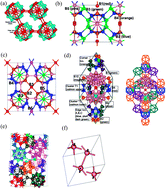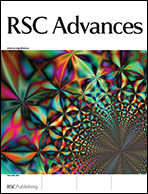Spectroscopic properties of crystalline elemental boron and the implications on B11C–CBC
Abstract
Elemental boron is a complicated material that involves a variety of phases with puzzling structures that are still controversial to this day. The allotropes of solid elemental boron include six crystalline phases (α-rhombohedral, β-rhombohedral, α-tetragonal, β-tetragonal, γ-orthorhombic, and α-Ga type), amorphous phases, and nanoscale structures. In the present work, the electronic structure and spectroscopic properties [X-ray absorption near edge structure (XANES) and optical dielectric functions] of the six crystalline phases were studied via the ab initio orthogonalized linear combination of atomic orbitals (OLCAO) method. The calculated XANES and dielectric functions of the α- and β-rhombohedral phases agree well with experiment. Based on this agreement, we predict the XANES spectra and dielectric functions for the other four crystalline phases. Each of the calculated XANES spectra of the five phases that have icosahedral units or clusters of icosahedra show a characteristic set of peak features in the energy range from 190 to 215 eV. These characteristic features were also observed in the XANES spectra of the icosahedron-containing B11C–CBC, a typical boron-rich compound.


 Please wait while we load your content...
Please wait while we load your content...